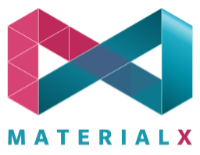 |
MaterialX 1.39.4
|
 |
MaterialX 1.39.4
|
MaterialX is an open standard for representing rich material and look-development content in computer graphics, enabling its platform-independent description and exchange across applications and renderers. Launched at Industrial Light & Magic in 2012, MaterialX has been a key technology in their feature films and real-time experiences since Star Wars: The Force Awakens and Millennium Falcon: Smugglers Run. The project was released as open source in 2017, with companies including Sony Pictures Imageworks, Pixar, Autodesk, Adobe, and SideFX contributing to its ongoing development. In 2021, MaterialX became the seventh hosted project of the Academy Software Foundation.
MATERIALX_BUILD_PYTHON option to build Python bindings.MATERIALX_BUILD_VIEWER option to build the MaterialX Viewer.MATERIALX_BUILD_GRAPH_EDITOR option to build the MaterialX Graph Editor.The MaterialX codebase requires a compiler with support for C++17, and can be built with any of the following:
The Python bindings for MaterialX are based on PyBind11, and support Python versions 3.9 and greater.
On macOS, you'll need to install Xcode, in order to get access to the Metal Tools as well as compiler toolchains.
The MaterialX C++ libraries are automatically included when building MaterialX through CMake.
To enable OpenImageIO and OpenColorIO support in MaterialX builds, the following additional options may be used:
MATERIALX_BUILD_OIIO: Requests that MaterialXRender be built with OpenImageIO in addition to stb_image, extending the set of supported image formats. The minimum supported version of OpenImageIO is 2.2.MATERIALX_BUILD_OCIO: Requests that MaterialXGenShader be built with support for custom OpenColorIO color spaces and transforms. The minimum supported version of OpenColorIO is 2.4.See the MaterialX Unit Tests page for documentation on shader generation and render testing in GLSL, OSL, and MDL.
By default, the MATERIALX_BUILD_PYTHON option will use the active version of Python in the developer's path. To select a specific version of Python, use one or more of the following advanced options:
MATERIALX_PYTHON_VERSION: Python version to be used in building the MaterialX Python package (e.g. 3.9)MATERIALX_PYTHON_EXECUTABLE: Python executable to be used in building the MaterialX Python package (e.g. C:/Python39/python.exe)Additional options for the generation of MaterialX Python include the following:
MATERIALX_PYTHON_PYBIND11_DIR: Path to a folder containing the PyBind11 source to be used in building MaterialX Python. Defaults to the included PyBind11 source.Select the MATERIALX_BUILD_VIEWER option to build the MaterialX Viewer. Installation will copy the MaterialXView executable to a bin/ directory within the selected install folder.
To generate HTML documentation for the MaterialX C++ API, make sure a version of Doxygen is on your path, and select the advanced option MATERIALX_BUILD_DOCS in CMake. This option will add a target named MaterialXDocs to your project, which can be built as an independent step from your development environment.
MaterialX should work in any editor that supports CMake, or that CMake can generate a project for. Some common Editors are listed here to help developers get started.
CLion is a cross-platform IDE that can be used to develop MaterialX. Additionally, it includes CMake and is free for non-commercial Use.
To get started with CLion, open the MaterialX repository directly, and it will load the CMake project for you. If you want to enable features like Python, go to Settings -> Build, Execution and Deployment -> CMake and configure the CMake Options, for example:
To build, either select Build -> Build Project or select a specific configuration to build. To install, select Build -> Install
Building the install target of your project will install the MaterialX C++ and Python libraries to the folder specified by the CMAKE_INSTALL_PREFIX setting, and will install MaterialX Python as a third-party library in your Python environment. Installation of MaterialX Python as a third-party library can be disabled by setting MATERIALX_INSTALL_PYTHON to OFF.
The MaterialX codebase uses a modified semantic versioning system where the major and minor versions match that of the corresponding MaterialX Specification, and the build version represents engineering advances within that specification version. MaterialX documents are similarly marked with the specification version they were authored in, and they are valid to load into any MaterialX codebase with an equal or higher specification version.
Upgrading of MaterialX documents from earlier versions is handled at import time by the Document::upgradeVersion() method, which applies the syntax and node interface upgrades that have occurred in previous specification revisions. This allows the syntax conventions of MaterialX and the names and interfaces of nodes to evolve over time, without invalidating documents from earlier versions.
The following rules describe the categories of changes to the MaterialX API that are allowed in version upgrades:
The following rules describe the categories of changes to the MaterialX Data Libraries that are allowed in version upgrades: